While not technically a “breed” per se, the Easter Egger is one of the most popular chickens for backyard chicken owners in the world!
These chickens lay colorful eggs that delight many (especially if you’re on the Gram!) and their docile, friendly disposition makes them a perfect pet.
Easter Egger Chickens
Quick Chick(en) Facts
| Origin | Chile & the Falkland Islands |
| Colors | Variety |
| Weight | 4 - 5 lbs. |
| Lifespan | 5 - 8 yrs. |
| Rate of Lay/yr. | 200 - 280 eggs |
| Egg size | Medium |
| Egg Color | Blue, Green or Olive (sometimes Pink!) |
| Heat Hardy | Tolerant |
| Cold Hardy | Yes |
| Broodiness | Occasional |
| Disease Susceptibility | Scissor Beak, Mites & Lice |
| Temperament | Docile, friendly |
| Beginner friendly | Yes |
| Cost to purchase | $3.30 |
Quick Jump
Chapter 1: Appearance of Easter Egger Chickens
Chapter 2: History of Easter Egger Chickens
Chapter 3: Easter Egger Chickens for Sale
Chapter 4: Easter Egger Chicken Egg Laying
Chapter 5: Easter Egger Chicken Health Issues & Care
Chapter 6: Easter Egger Chicken Temperament
Chapter 7: Feeding Easter Egger Chickens
Chapter 8: Coop & Run Size for Easter Egger Chickens
Chapter 9: Pros & Cons of Easter Egger Chickens
Chapter 10: Easter Egger Chicken FAQs
Chapter 1: Appearance of Easter Egger Chickens
Since they’re not an official breed of chicken, Easter Eggers can vary wildly in appearance.
There isn’t one official “Easter Egger” since they can have any kind of comb, tails or no tails, any kind of muffs or none at all, and also vary in color from chicken to chicken.
If you welcome five Easter Eggers into your flock, you’re likely to get a pretty unique mixed bag unless they all share the exact same parents.

Share this Image On Your Site
Easter Egger Chicken Size & Weight
Size and weight of Easter Eggers can vary too, but you’ll generally find them on the smaller side of “average.”
That means around 4 lbs. for hens and 5 lbs. for roosters.
They can be found on the larger side too, but this is much less common.
Colors
Just like their general appearance, Easter Egger chickens come in a variety of colors.
So much so that there isn’t a specific color that is accepted by the American Poultry Association. This is also because of the fact that they are not classified as purebred chickens.
With that being said, you can find white, black, brown, a mixture of the three or even some completely random concoction!
Like we said earlier, if you get a flock of them, you’d never know they came through the door together!
Chapter 2: History of Easter Egger Chickens
The Easter Egger chickens originally came about when breeders started breeding Araucanas and Ameraucanas with other breeds.
This is why it’s so hard to nail down a true color, shape and size for the chicken as it could have any number of genes and traits.
Easter Egger Chickens Journey
Easter Eggers come from a long line of “foundation stock” that derived in Chile and the Falklands and were introduced to the United States and around the world.
A foundation stock is the first line of a new breed of animal, and in this case, the Araucana, the Ameraucana AND the Easter Egger all came from this foundation stock.
Both “parents” of the Easter Egger chicken were found or bred for the “blue egg” gene, so when you find an Easter Egger that has a more green/olive colored egg, that means these Araucana and Ameraucana chickens bred with a different chicken who had the “brown egg” gene.
Since there is no “breed standard” for the Easter Egger, it’s hard to truly pinpoint the timeline of their popularity, but it is widely accepted that they arrived in the United States in the 1970’s.
Since then, they have become a welcome member of any backyard flock due to their polite disposition and wonderful eggs.

Share this Image On Your Site
Chapter 3: Easter Egger Chickens for Sale
Easter Egger Chicken Hatcheries
Unlike Silkie and Polish chickens, the Easter Egger doesn’t seem to have any dedicated hatcheries, but they are widely available across the country and online.
Easter Eggers can be found for as low as $2.40 per chick if you were to buy more than 100, but a single Easter Egger would only set you back $3.30.
Bear in mind, however, that online hatcheries will have a minimum order of chicks, so if you only want one Easter Egger, you may have to fill the numbers with other breeds to qualify for delivery.
Most hatcheries that sell Easter Eggers will not be able to commit to a specific color of chicken or egg when selling online, mainly due to the fact that it can be impossible to truly know which Easter Egger you’re going to get!
Chapter 4: Easter Egger Chicken Egg Laying
Now down to the real reason you’re here. The egg laying!
Easter Eggers are notoriously excellent egg layers, and lay at least four eggs a week most of the time.
A common misconception of Easter Eggers is that they will lay a multitude of different colored eggs.
Whichever color the first egg that your Easter Egger lays is will be the only color they lay.
If you’re hoping for a rainbow egged flock, you’ll need more than one Easter Egger so those photos look amazing on Instagram!
As for broodiness, you’ll find that the Easter Egger rarely goes broody, which is even better if you keep them for their eggs.
They’ve specifically been bred for laying colored eggs, so breeders have worked hard to reduce broodiness in the breed.
That’s not to say they won’t ever go broody, however.
If they do go broody, and you need to keep egg production high, keeping them away from the nesting boxes for a couple of days should break the broodiness.

Share this Image On Your Site
Chapter 5: Easter Egger Chicken Health Issues & Care
Easter Egger chickens are hardy! Super hardy!
This means you’ll likely not see some of the diseases that are prevalent in other birds like “water on the brain” or “bumblefoot.”
With that being said, you’ll still want to ensure their feet, ears and muffs are clean so they don’t attract mites and lice, just like any other chicken.
Despite being hardy, there is a genetic condition called Scissor Beak that has been known to crop up in Easter Egger chicks.
Scissor Beak, also known as crossed beak, is a condition where the upper and lower beaks grow in different directions, meaning it is difficult for these chickens to eat.
Some chickens that suffer from Scissor Beak have been able to adapt by scooping food into their lower beak, as opposed to pecking at food like healthier chickens.
A nipple watering system is usually the best way to go for chickens that suffer from scissor beak, as their access to water is limited. This way, they’re able to let water drip into their mouths, as opposed to working hard for it when it’s in a dish.
One of the ways to reduce the harmful effects of scissor beak is to trim the length of the beak itself.
Chickens have been known to do this naturally while they forage and eat, so it is perfectly normal.
You will want to keep some supplies handy while you do this, however, including styptic powder and a chicken first aid kit.
Chicken beaks are very similar to a dog’s nails. If you cut them too far back, they will start to bleed and it can be very painful for the chicken.
Since this is a genetic complication, it is fair to assume that breeding chickens that suffer from scissor beak is not in your best interests.
Other than that, you should be able to enjoy having each Easter Egger in your flock for up to eight years, and sometimes longer!
Chapter 6: Easter Egger Chicken Temperament
In all of the breed specific articles we’ve written so far, we’re yet to come across a chicken that isn’t loveable, and the Easter Egger is no different!
Easter Eggers are known as gentle, friendly and loving birds who will often hang out with you and accept gentle pets.
Curiosity can get the best of them sometimes, so you might find one away from the flock while it’s discovering new ground, and a fenced in yard should stop you from losing one altogether.
Chances are, however, that your Easter Egger will be very loyal, and while definitely curious, will always find its way back to mom and dad.
These chickens are great with kids too, so you should have no problem introducing them to your backyard when kids are involved.
They’ll often walk right up to you for treats and cuddles (mostly treats), and you’ll easily fall in love with their personality even before they’ve ever laid a colorful egg for you.
Easter Egger Chickens in the Pecking Order
Because of their gentle disposition, there are times where an Easter Egger can get picked on by a bird that is higher in the pecking order, or is known as more of an aggressive bird.
As you probably know, the pecking order of a flock isn’t always set in stone.
You may introduce an Easter Egger into your mixed flock and it gets along perfectly well with everybody.
There may also be times where they’re shunned or picked on by the other birds.
It has also happened where Easter Eggers simply keep to themselves from time to time (other than going to you for those treats, of course).
It is definitely fluid, especially with Easter Eggers, so for the first few weeks you may want to keep a close eye on the flock to ensure they’re integrating well.
If you find there are some issues, you can separate the problem birds and try to reintegrate them at a later date.
For the most part, though, they will be happy, healthy birds with plenty of love to go around.
Chapter 7: Feeding Easter Egger Chickens
Easter Egger chickens don’t have any specific dietary needs, meaning you’ll be fine feeding them what you feed the rest of your flock.
Chicks will need a 21% Starter Feed, which you can purchase right here!
They will eat Starter from the day they’re born to when they’re 8 weeks old.
Once they’re 8 weeks old, you’ll want to switch them to a 18% Grower Feed, which you can also purchase right here!
Grower is fed to pullets from 8 weeks all the way up to when they lay their first egg.
Once their first egg is laid, you’ll need to switch them to a 16% Layer Feed.
You guessed it. You can purchase Layer Feed right here!
This Layer Feed will be the main source of nutrition for the rest of their lives, but you can add in treats like Scratch, or Oyster Shell to aid in egg production.
Chapter 8: Coop & Run Size for Easter Egger Chickens
Given their smaller size than the average bird, an Easter Egger will usually fit fine into a coop that has three or four square feet per bird.
This is the average size of a chicken coop, so if you’re adding Easter Eggers into an already established coop and flock, you’ll be just fine.
Easter Eggers do love to free range, so space outside of the coop for them to roam is ideal, but they have also been known to do just fine in confinement too.
Many backyard chicken owners don’t have the luxury of a fenced in yard, and if you’re in that situation, a larger run than usual will set them up for success as they enjoy foraging.
In general, we recommend around 10 square feet per bird for the run, which will give them more than enough space to stretch their legs and socialize well too without getting on each other’s nerves.
Chapter 9: Pros & Cons of Easter Egger Chickens
| Pros | Cons |
| Friendly, docile & loving | Can suffer from scissor beak |
| Great egg layers | Sometimes lower down on the pecking order |
| Great foragers | Can be skittish |
| Lay beautiful, colored eggs | Escape artists/curiosity can get the best of them |
| Healthier than most chickens | Beards can get messy if kept unclean |
| Great with kids | No consistent egg color between each chicken |
Chapter 10: Easter Egger Chicken FAQs
Q: How many eggs will an Easter Egger hen lay per year?
A: Between 200 and 280 per year
Q: What color are their eggs?
A: Easter Egger eggs vary in color, and can be blue, green and sometimes even pink!
Q: Are Easter Egger chickens aggressive?
A: No, they are very docile and friendly animals
Q: How often do Easter Egger hens go broody?
A: Easter Eggers rarely go broody, and can be broken of their broodiness relatively quickly
Q: Are Easter Egger chickens susceptible to any diseases?
A: Easter Eggers are not typically susceptible to many diseases, but a genetic condition known as scissor beak has a higher rate in Easter Eggers than other chickens
Summary
Easter Eggers are a wonderful bird to have in your flock!
These little creatures will warm the hearts of your family, especially if you have children.
An entire flock of Easter Eggers will give you a rainbow of eggs each time they lay, and they lay quite a lot.
Making sure you don’t breed the ones that are born with scissor beak will ensure that you have many happy and healthy birds for years to come!


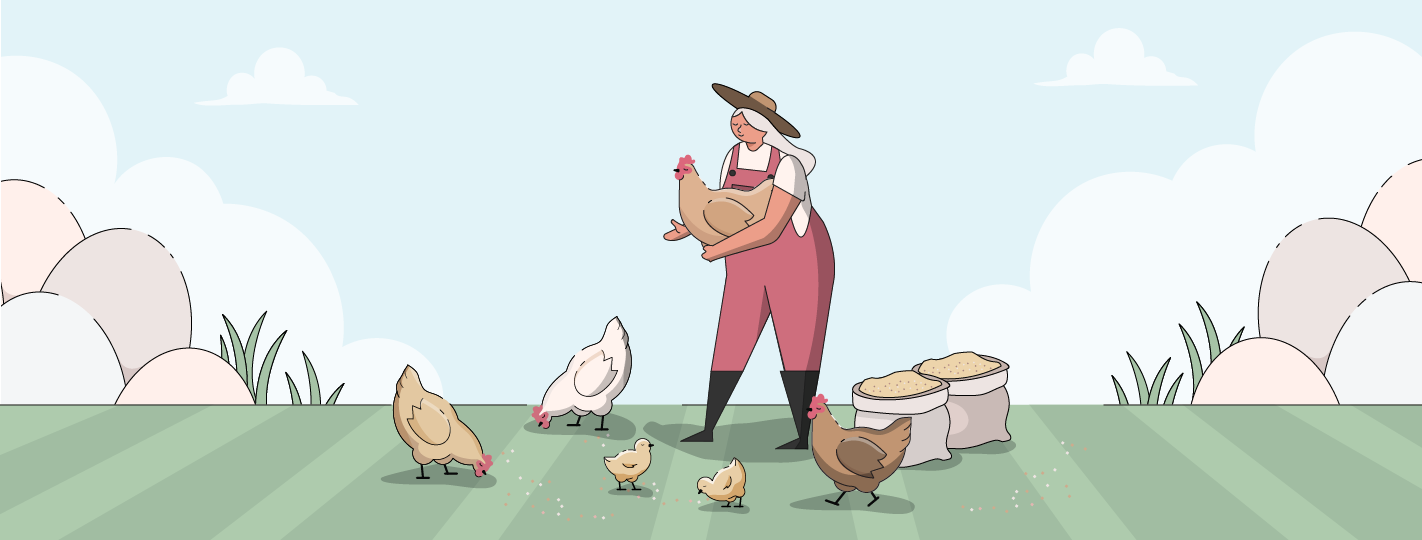

![Winter Chicken Care | Ultimate Guide [2025]](http://milefour.com/cdn/shop/articles/Mile_Four-Content-15_e1067340-1a72-4632-83f5-c66d9a2158d9.png?v=1765974101&width=1500)

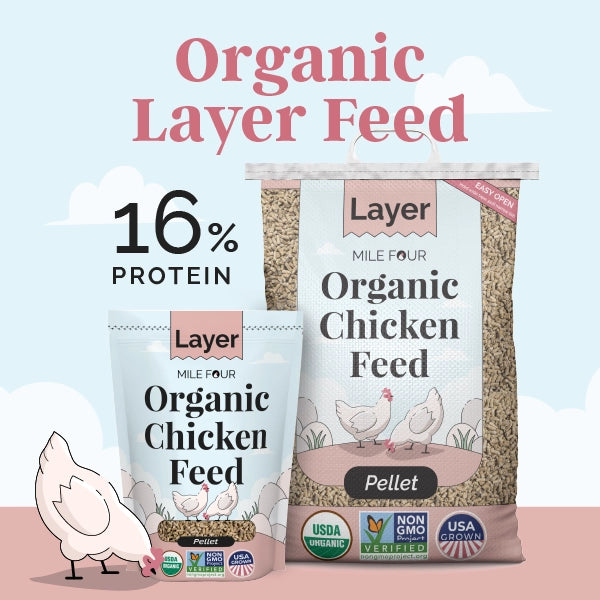
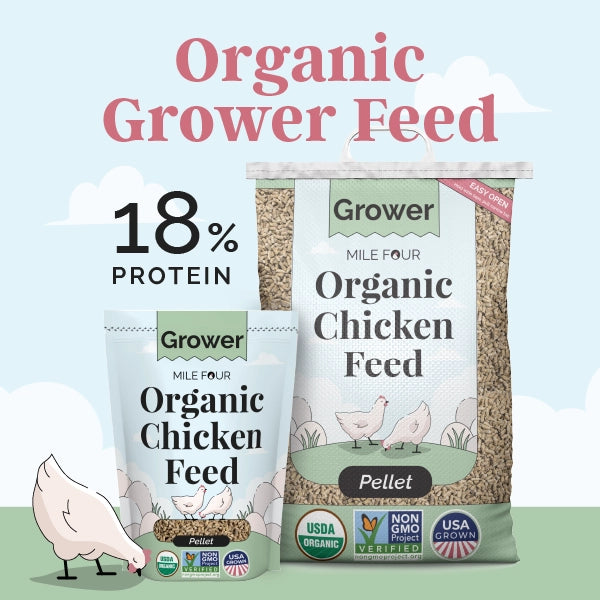
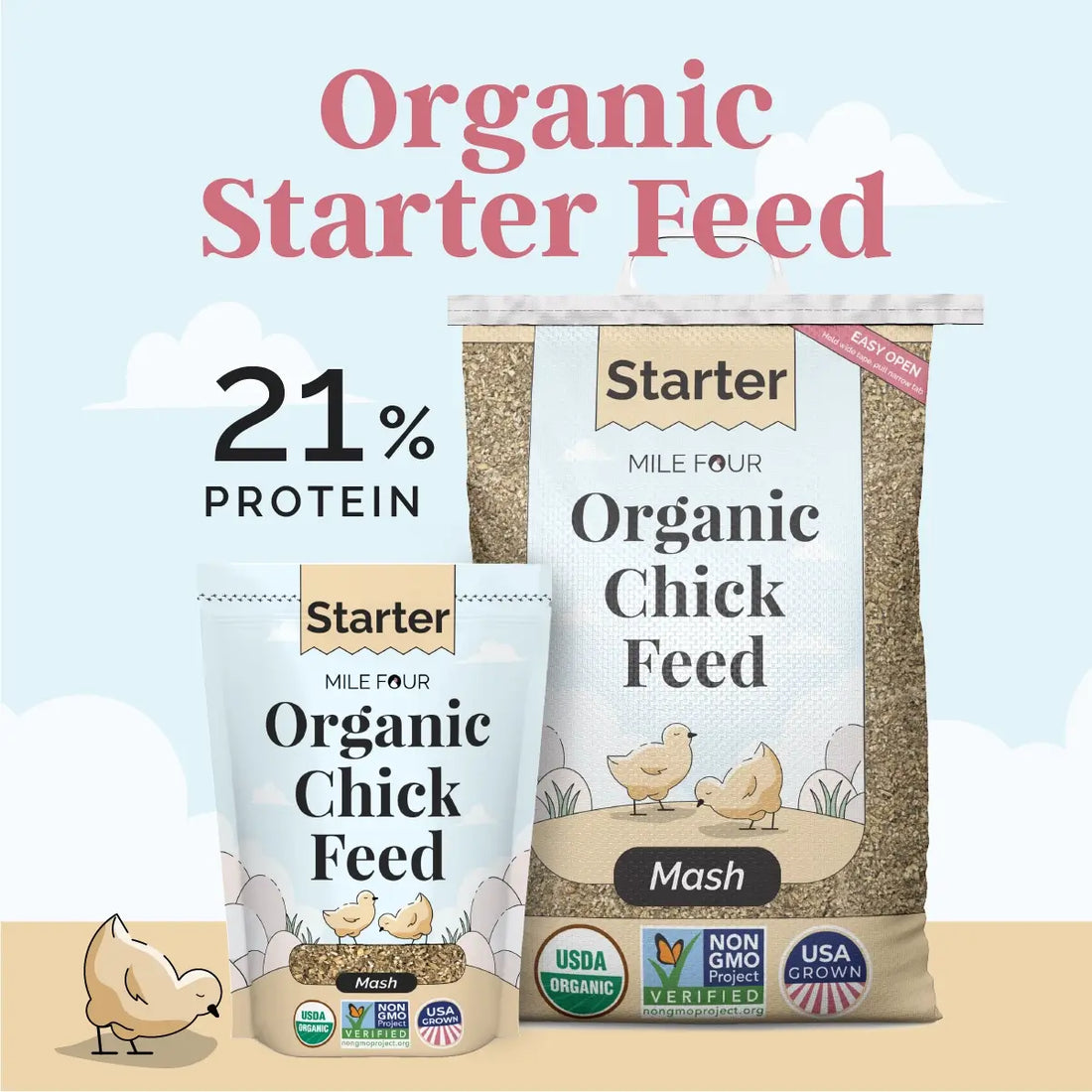
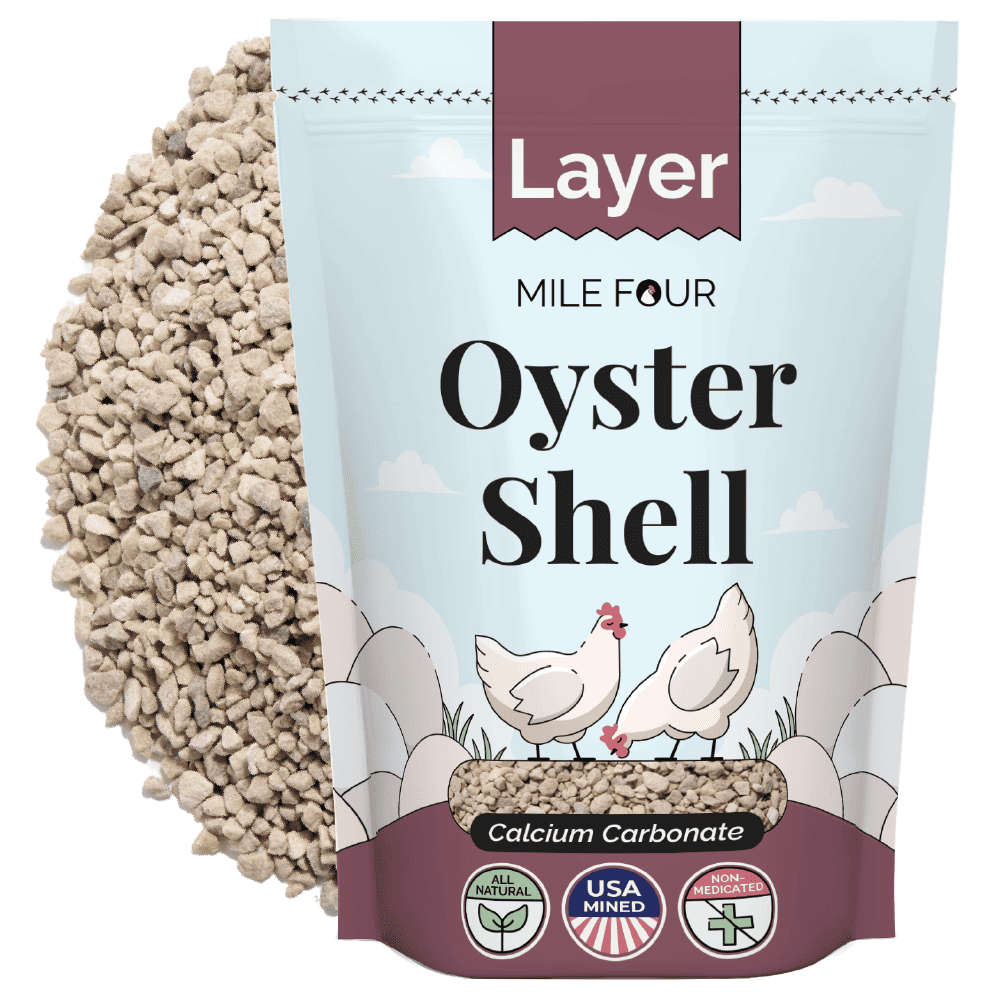
3 comments
I have i Easter Eggers thar are 4-5 mo old and haven’t started laying. What age do they normally begin to lay? Other chickens that are same age are akready laying
How much is too much food?
The lady I got my chicks from says I may be over feeding them because they are bigger than the others from the same batch:
We’ll introduction to Easter egg chickens .